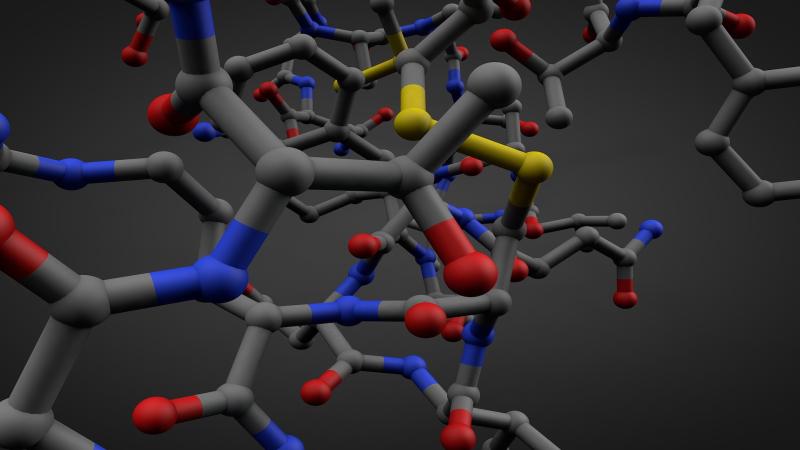
Trehalose, a molecule that consists of two glucose units, is used in the manufacture of anti-cancer drugs, tablets, food additives, cosmetics, and a variety of other products. It serves as an energy-storage molecule and also protects some living organisms from stress during extreme climatic conditions. Recent studies have suggested that trehalose can also be used in cryopreservation — a technique of preserving biological samples under very low temperatures. Polymers made of trehalose molecules are environmentally friendly and compatible with our body tissues.
In a recent study, researchers at the Indian Institute of Science Education and Research (IISER), Thiruvananthapuram, have synthesised a novel trehalose molecule that can form long, helical polymers under high temperatures. These molecules, the researchers say, can be used in protein stabilisation and making artificial fibres. The study, published in the journal Angewandte Chemie, was funded by the Department of Science and Technology (DST). The researchers dedicated this study to Prof. M. V. George, an eminent Indian chemist, who passed away peacefully on 9 December 2019.
Previous attempts to synthesise trehalose-based polymers involve copolymerisation, where more than one type of the constituent molecule is present. Alternatively, in other studies, trehalose molecules project from the polymer chain like a pendant, instead of acting as the backbone. In the current study, the researchers describe a first-ever successful attempt at polymerising trehalose with the molecule as the backbone of the resulting polymer.
The researchers first created a novel trehalose molecule by substituting both ends of a simple trehalose molecule with two different groups of atoms. These groups can react with each other to form a link. Hence, many new units of trehalose can now join together end-to-end to create a long polymer chain. When the novel trehalose molecule was crystallised, the researchers found that it did not polymerise spontaneously. As a result, it could be stored at room temperature for long periods and made into polymers when necessary, they say.
With the novel trehalose molecule, the researchers then synthesised two different crystals — a rod-shaped crystal and a rectangular-shaped one. In these crystals, the molecules are arranged such that the complementary groups are not close to each other, and therefore, cannot form polymer chains. They then investigated how these crystals polymerise with increasing temperature. They heated the crystals to 90°C for four days and monitored the changes every 24 hours. They found that with an increase in temperature, the complementary groups in both crystals eventually came closer, leading to their polymerisation at the end of four days.
An exciting feature of these polymers is that they take a helical shape instead of any random shape. The researchers are now exploring the applications of this novel polymer, including its ability to stabilise proteins.
“The bonds in these polymers are exceptionally robust when compared to the regular linkages present in other sugar polymers like starch or cellulose. If this polymer is spun into fibres, it could be much stronger than cotton fabric, and wouldn’t tear easily,” says Prof Kana M. Sureshan, the corresponding author of the study.
The starting material — the novel trehalose monomer — and the final polymer synthesised by the researchers, are crystals. This process, called crystal-to-crystal polymerisation, overcomes many challenges faced in the polymerisation of liquid molecules. For instance, long polymer chains can be synthesised without the need for catalysts or tedious purification steps.
“Crystal-to-crystal polymerisation chemistry is a new area which we started a few years back. So far, we have published a few studies where this method was used for the polymerisation of various mimics of biopolymers. Some of them include pseudo-proteins, DNA analogues and pseudo-polysaccharides,” adds Prof Sureshan.
This article has been run past the researchers, whose work is covered, to ensure accuracy.






